February 12, 2025
From Egypt to Mexico: Insights into BRT and Transport Planning
In January, ITDP teams from Africa and Mexico engaged in a study tour of the public transport system in Mexico City, Mexico in support of Cairo, Egypt’s own Bus Rapid Transit (BRT) system planning.
Greater Cairo in Egypt is a sprawling metropolis often known for its challenges with congestion and traffic. A lack of sufficient rapid transit options and the rapidly increasing ownership of private cars have led to mobility issues that come at financial, health, and safety costs to residents. Reducing the reliance on personal vehicles depends on enhancing public transport systems and non-motorized transport (NMT) options, which can not only reduce carbon emissions but spur economic growth and improve quality of life. As such, key agencies in Cairo like the New Urban Communities Authority (NUCA) have been undertaking plans for a BRT system that will greatly integrate transport and mobility access between 6th of October City and Central Giza to serve the Greater Cairo population.
Critical to the roll-out of the BRT will be an effective engagement process with existing public transport operators. Thus, ITDP Africa is working in collaboration with NUCA, the 6th of October Authority, Swedfund, and UN-Habitat on an inclusive engagement plan with existing operators along the proposed BRT corridor to ensure their buy-in and participation in services and operations. To inform the development of these plans, ITDP Africa and ITDP Mexico organized a bus industry transition study tour in Mexico City in early 2025 to allow government and transport officials from Cairo to learn first-hand about industry formalization and modernization solutions from another major city.
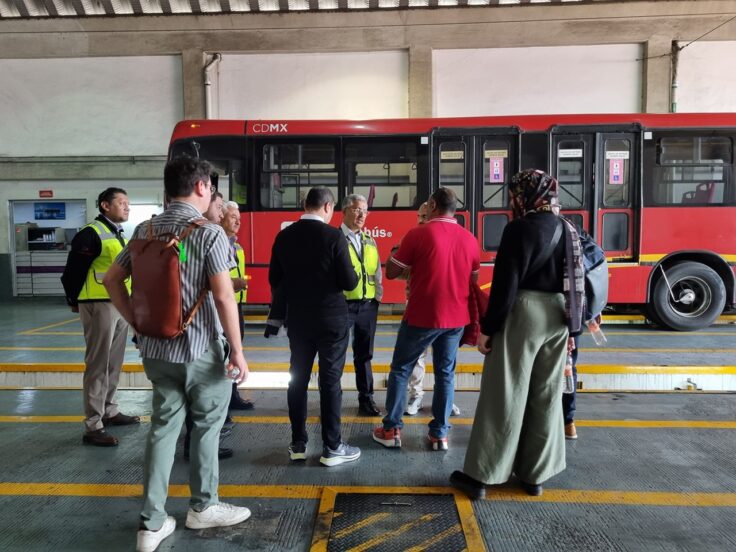
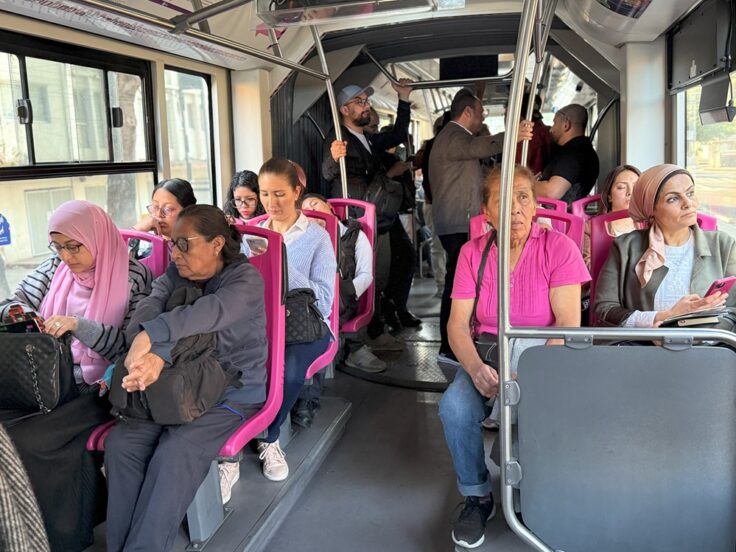
Mexico City As A Model
Mexico City has seen major changes in sustainable transport policy in recent years. Since the 2000s, the city has shifted from a prior focus on expanding road infrastructure for private cars to now investing more into active mobility and public transport infrastructure. In fact, the city has been recognized by the Sustainable Transport Award program multiple times for its achievements in everything from bikeshare access to bus electrification. The city is now reducing the amount of road space for cars and reallocating that space to pedestrians, cyclists, and public transport — particularly through significant policy pushes like parking reform in the past decade. Over recent years, the city worked on the expansion of its Metrobús BRT with 33 kilometers of new corridors, implemented 200 kilometers of protected bike lanes alongside its growing Ecobici bikeshare, introduced an integrated fare card for all public transport lines, and launched three lines for its innovative Cablebús cable cars.
Now, Mexico City has a reported mode share of 70% for sustainable modes across public transit, cycling, and walking. Its diverse rapid transit network currently includes twelve metro lines, seven BRT corridors, one light rail line, twelve trolleybus corridors, and three cable car lines. The private operators of the BRT system report to Metrobús as a government agency. Metrobús sets important service standards and monitors operator performance. Thus, the ongoing growth of its BRT and other complementary transit systems has made it a destination for knowledge sharing and learning from global cities like Cairo.
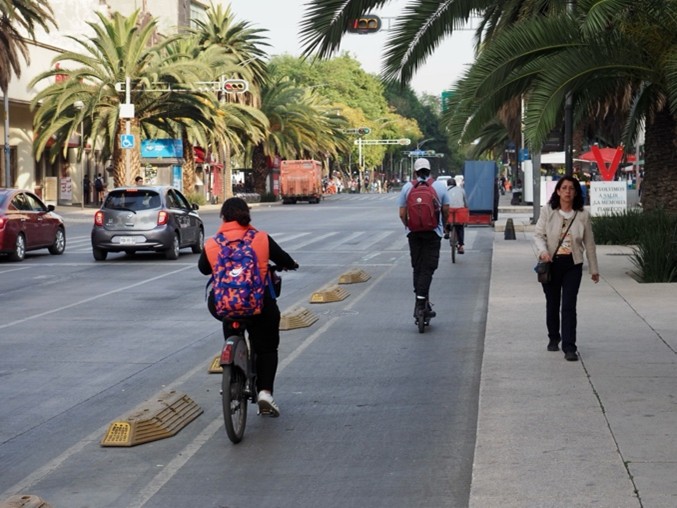
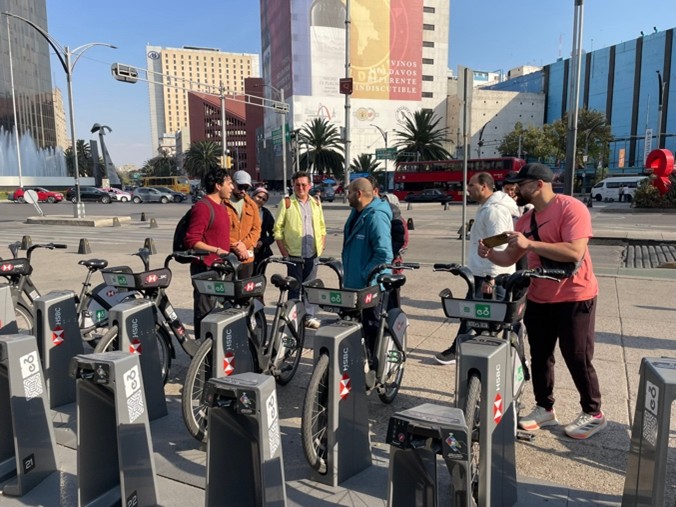
Informing Cairo’s Bus Transition
Quality public transport services require both robust government regulation and the contracting of effective private companies. The government’s role in public transport operation varies widely. In the best cases, governments decide which public transport services to provide, then tender out these services through competitive bidding to private operators. These companies can often be profitable, competitive, and provide high-quality jobs with benefits. A government’s approach to regulating its region’s bus industry is a crucial factor in determining the type of bus operators that emerge and succeed. The government must be a strong, consistent, and fair regulator of its bus market to best serve the interests of residents and the public. In the case of Greater Cairo’s vision for its Western Corridor BRT, there is a significant opportunity to improve the existing paratransit industry and operators along the planned corridor while ensuring a future of reliable, efficient bus services.
Best practices gained from a similar transition undertaken in Mexico City can help inform the design of the Western Corridor BRT’s business model and development processes. A robust and inclusive planning process with operators ultimately generates interest on the part of the private sector to help operate and advance quality BRT services. Thus, a more conscious effort to engage existing operators will ensure the retention of jobs in communities, the elimination of competing services along the corridor, public support for the BRT, and continued operational improvements. The ITDP study tour allowed partners and planners from Egypt to examine and learn from real-world business models and operations already in place in Mexico City, spotlighting key challenges and opportunities for aligning plans with public transport operators. It illustrated some of the shared issues faced by cities in the transition process, and how stakeholders like Mexico City worked to address pitfalls and created better oversight of services to maintain quality and control of the system.
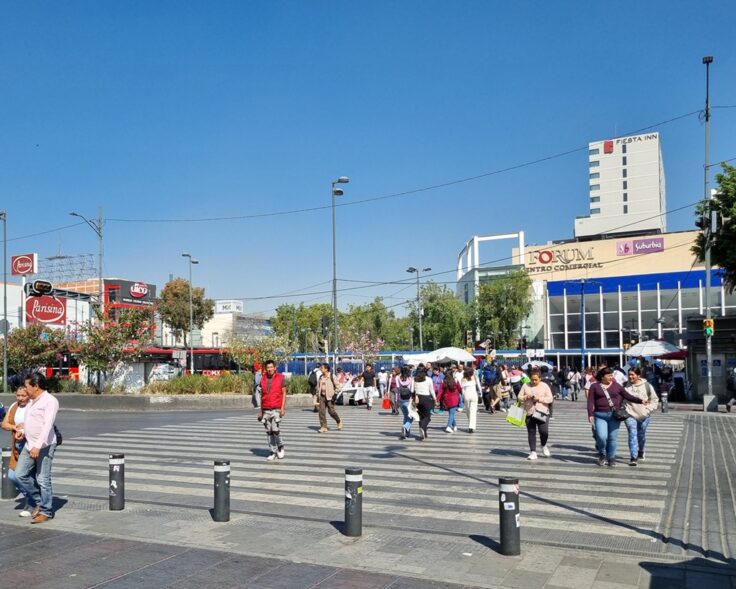
The study tour was a hands-on experience for all those who participated, offering valuable lessons on how to implement and operate a modern, quality BRT system in a busy metropolitan area. The team observed the strategies that Metrobús utilizes to continually improve and address challenges within its public transport system. The lessons learned from this tour are particularly relevant as Greater Cairo continues with its own planning and development processes for the Western Corridor. Workshops with Metrobús and its operators highlighted the crucial role of government actors in the transition process and further emphasized how governments can facilitate engagement with operators to streamline oversight and management over transport services.
Furthermore, the tour participants from Egypt learned directly from Mexico City’s agencies, officials, and planners about the integration of BRT with multiple other forms of sustainable transport networks. In particular, the city’s robust Ecobici bikeshare system and expansive network of bike lanes have been re-envisioned and planned to complement bus and public transport hubs in many commercial and residential areas to reduce private vehicle use and improve access for all. Additionally, the tour’s exploration of street re-designs made it clear the importance of having inclusive public spaces and pedestrian areas that make traveling and commuting between destinations as easy as possible. The Mexico-Egypt tour ultimately cemented the importance of cross-regional knowledge sharing between public and private transport stakeholders with vested interests in real-world solutions.
For Greater Cairo to build a comprehensive mobility network centered around quality BRT, it can certainly take a page from the trials, successes, and growth of Mexico City.
